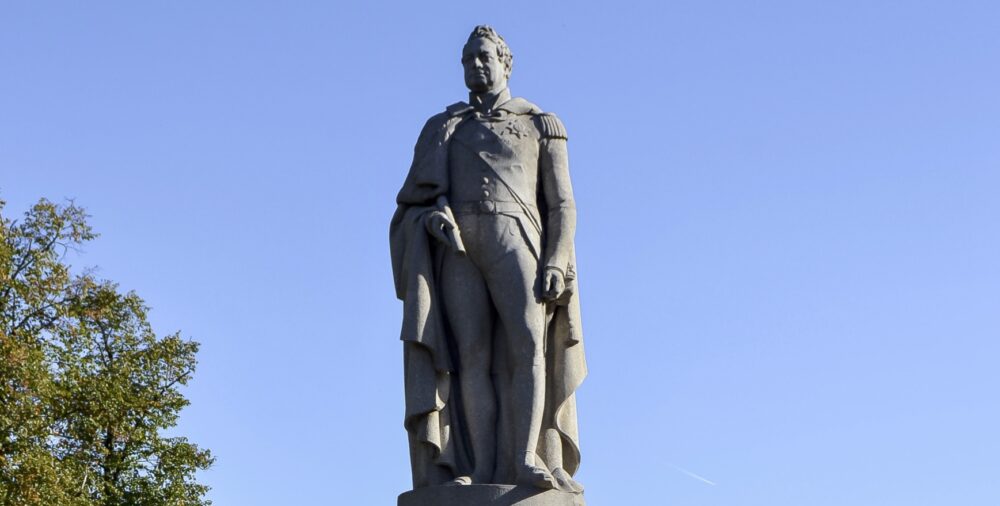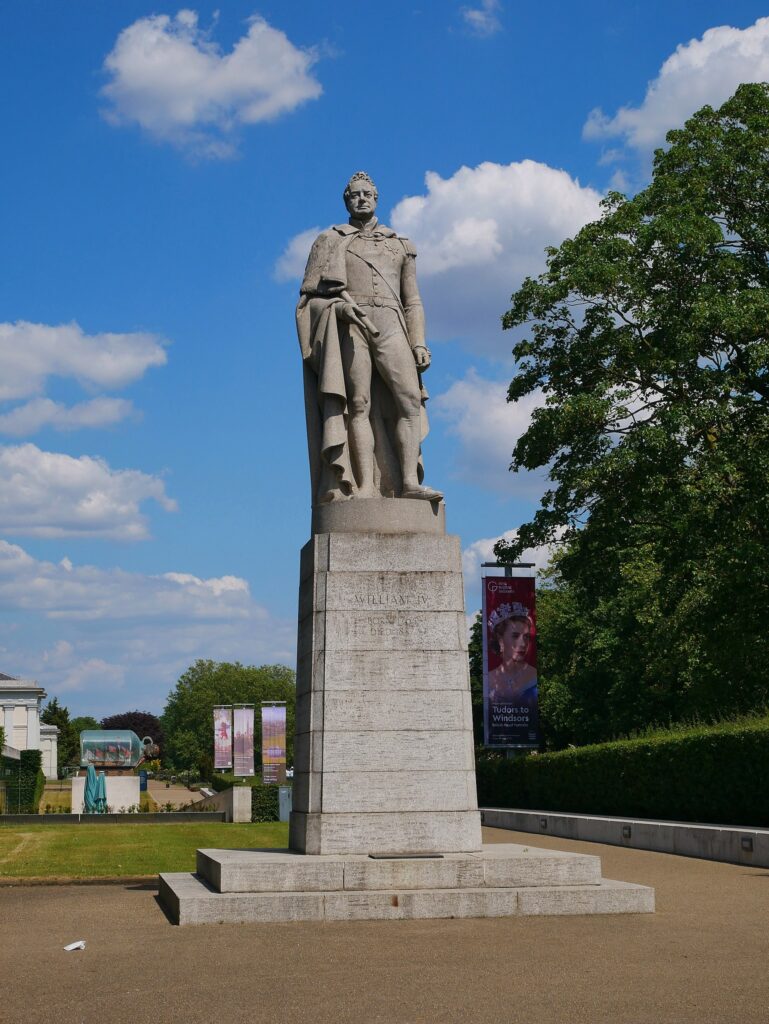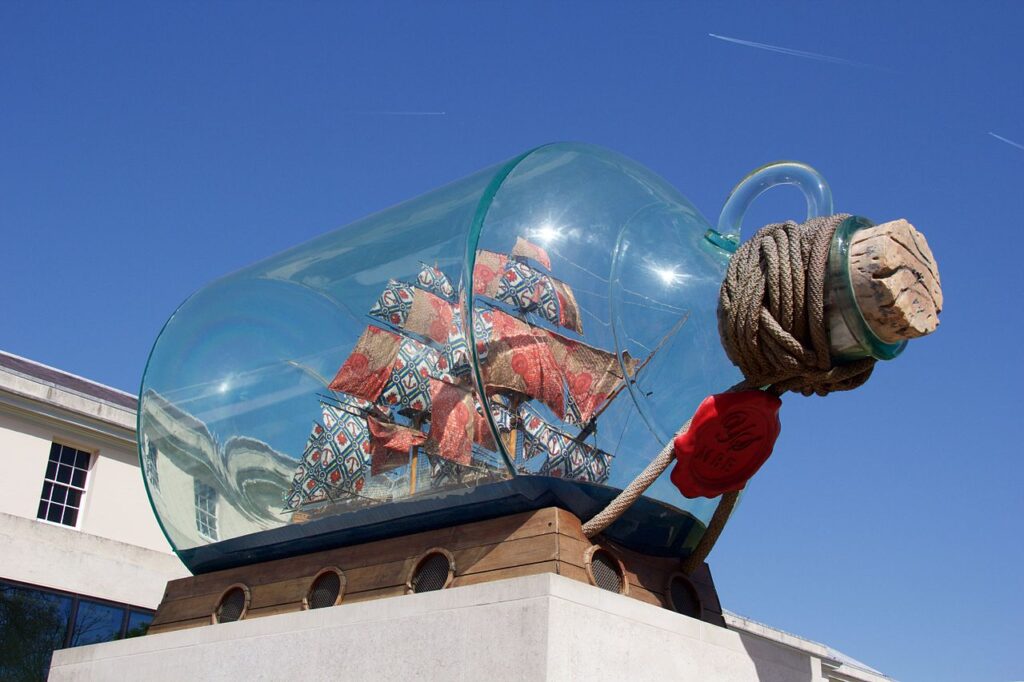
WHAT: Statue of William IV
WHERE: Greenwich Park (map)
BY WHOM: Samuel Nixon
WHEN: 1844
Poor old William IV. The last of the Hanoverian kings of Britain, he is all but forgotten today, succeeded as he was by his niece Victoria (whose name is virtually a synonym for the entire 19th century), and preceded by his brother, the rakish, obscenely extravagant George IV (who gave us the Regency).
And he wasn’t actually ever meant to be king. The third son of George III, the line of succession should have allowed him to live the responsibility-free life of a royal prince, but in 1817 Princess Charlotte – daughter and heir to the Prince Regent – died. Even then there was an older brother, Frederick, who became heir-presumptive, and who would have succeeded to the throne had not he turned up his toes in 1827. (He was ‘The Grand Old Duke of York’ and there’s more on him here.)
So in 1830 on the death of George IV, our man becomes king at the grand old age of 64 (currently the greatest age of any new monarch – but watch this space as Prince Charles is now 73). He was to rule for seven years, dying in 1837 and is buried in St George’s Chapel in Windsor.
How to commemorate a dead king? The fourth plinth in Trafalgar Square was earmarked for an equestrian statue of him (i.e. William mounted on a horse, showing him in the most herois light), but the funds could not be raised (this was in 1841, just four years after William’s death).
The statue above – 20 tonnes of granite, over 4 ½ metres tall – was commissioned and erected in 1844. Its original position was in the City, on the junction of King William Street and Cannon Street, looking down onto Rennie’s London Bridge. It seems to have been well-received, Gentleman’s Magazine called it “a striking and imposing object… a masterpiece” and “admired by all who are capable of appreciating artistic genius”. But 90 years later changes to the roads on the approach to the bridge meant the poor chap had to be moved.
He was despatched to Greenwich, at the entrance to the park, on the site of the newly created National Maritime Museum, and a stone’s throw from the Old Royal Naval College. There was a certain appropriateness to this. William had been known as the ‘Sailor King’, he was a serving admiral during the battle of Cape St Vincent, and in 1827 had been created Lord High Admiral of the Royal Navy.
Perhaps then William’s statue had found a site where it, and its subject, could be appreciated. Events, though, had different ideas; to quote P G Wodehouse, “unseen in the background, fate was quietly slipping the lead into the boxing glove”.
Remember the Trafalgar Square fourth plinth? Since 1998 this previously empty spot in front of the National Gallery has been used for a succession of contemporary sculptures and installations, one of which was Yinka Shonibare’s ‘Nelson’s Ship in a Bottle’ in 2010. After being taken down from the square, this piece was bought by the National Maritime Museum and erected not 100m from William’s stature, effectively upstaging our hero.


